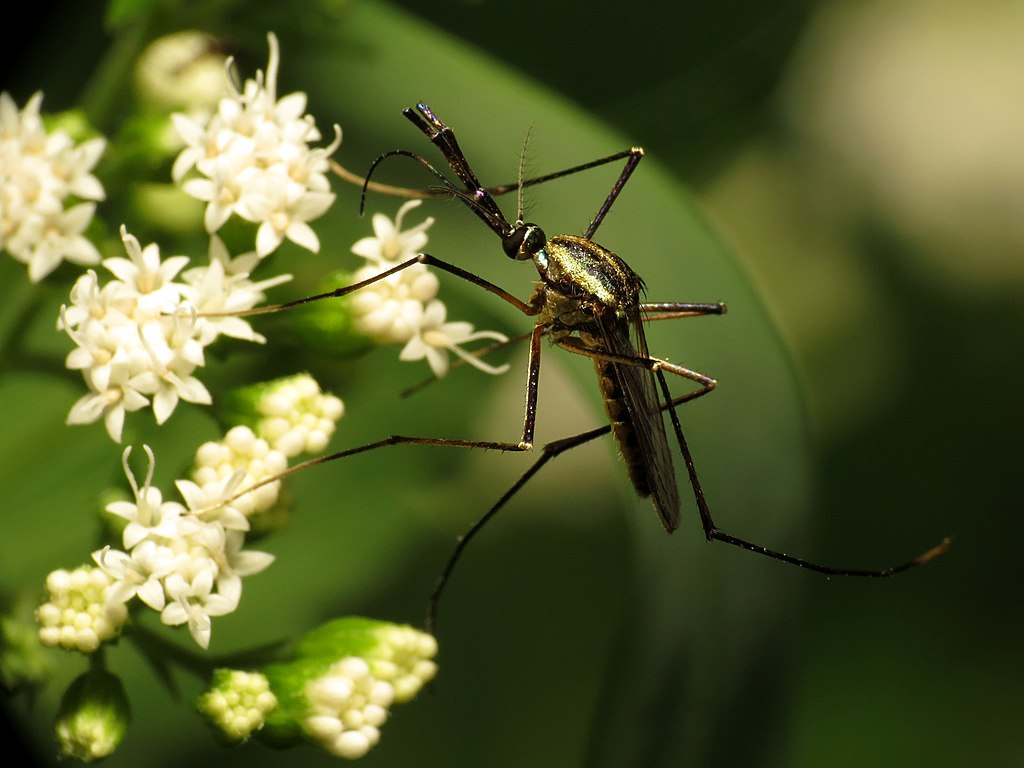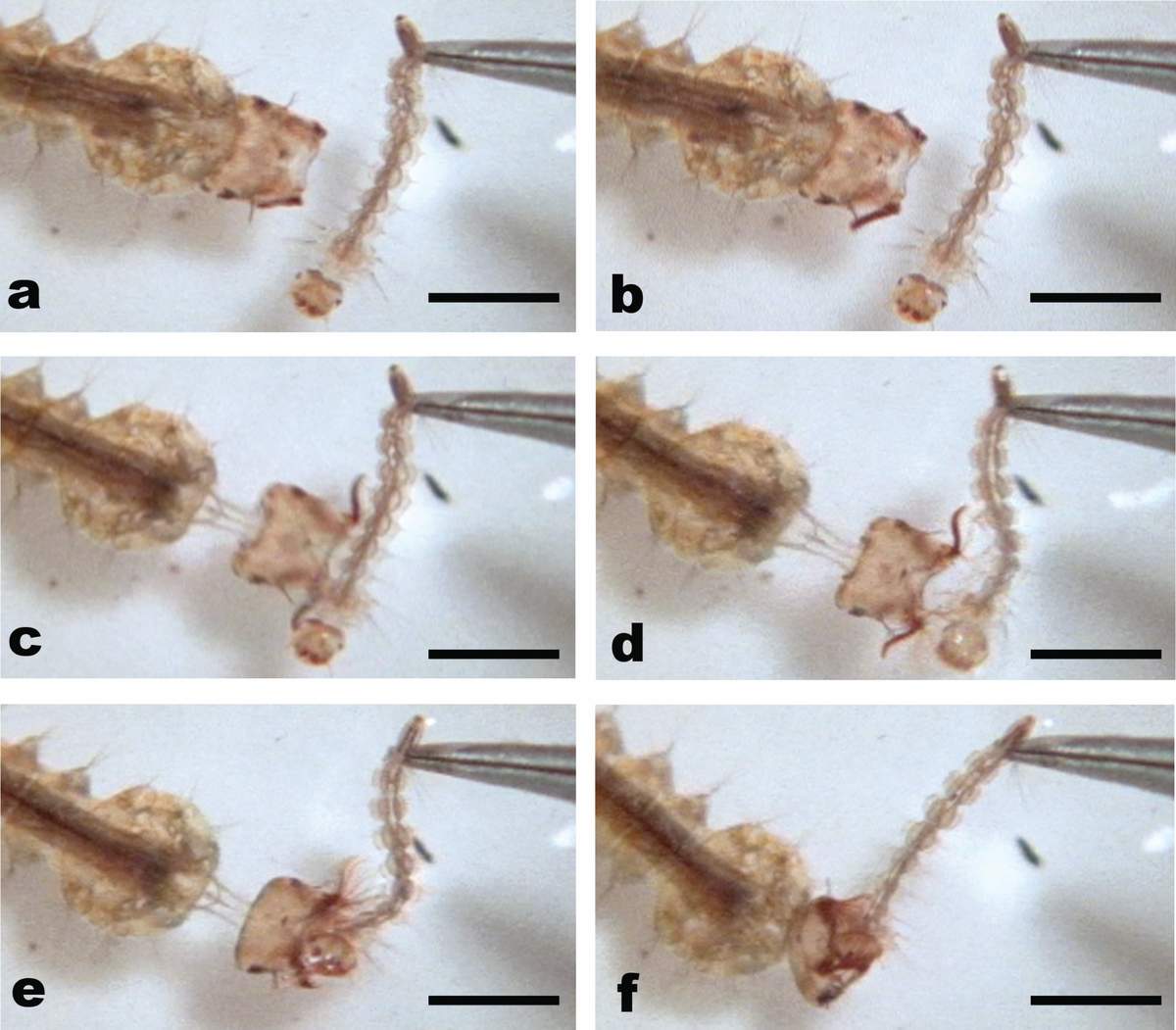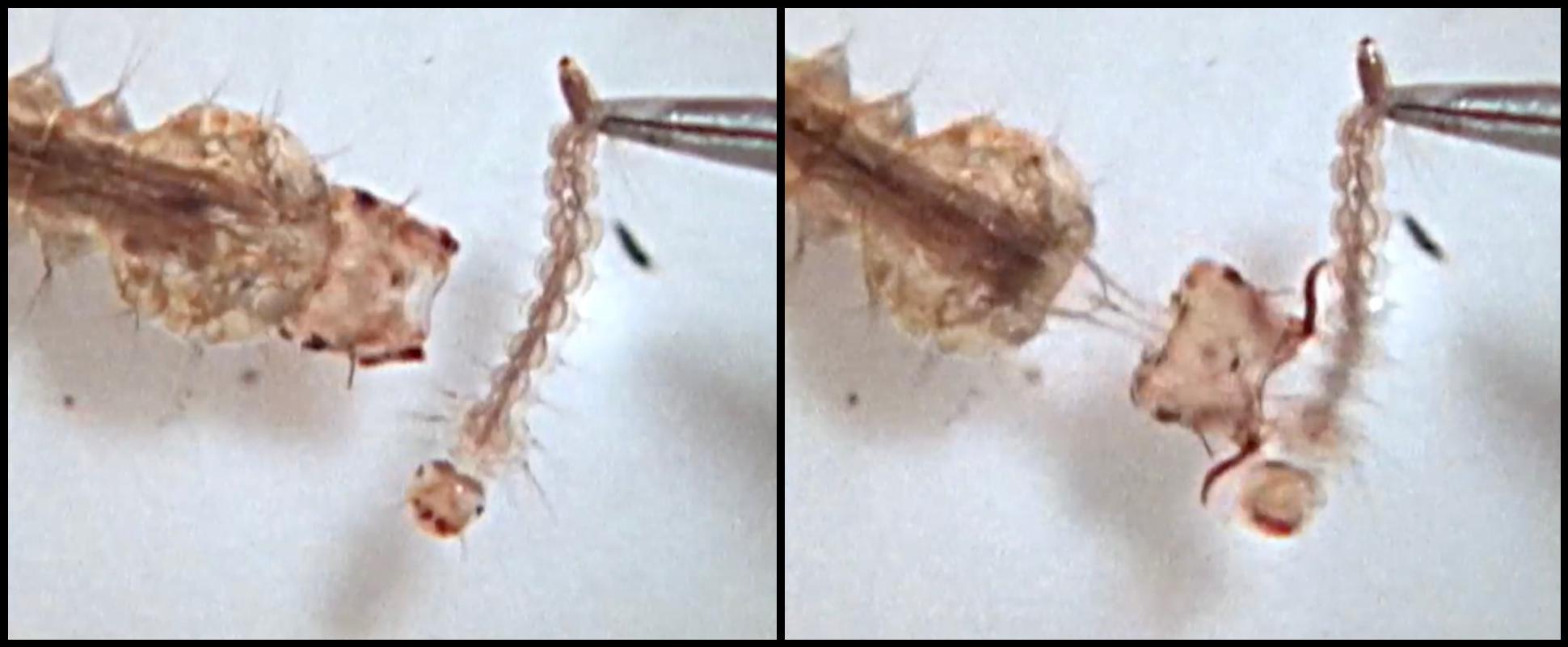Most mosquitoes are annoying, and a serious health risk. But some aren’t. A few even help get rid of other mosquitoes. Now, scientists have discovered the head-popping secret that turns the larvae of some mosquitoes into deadly hunters of other mosquitoes.
It may seem surprising, but not all mosquitoes suck blood. In fact, some mosquitoes can be quite helpful.
Elephant mosquitoes are larger than regular mosquitoes. Instead of blood, they live off of juices from plants. Even better, elephant mosquitoes can help reduce the number of blood-sucking mosquitoes.

(Source: Katja Schulz [CC BY 2.0], via Wikimedia Commons.)
Scientists have long known that some mosquito larvae eat other insect larvae. A larva is a stage some insects go through as they develop from eggs into adults. Larvae usually look very different from adult insects, and eat different food.
Mosquito larvae can’t fly. Instead, they live in water, and look a little like worms. Mosquitoes can develop in a puddle, or even a bottle cap of water. Because they only need tiny amounts of water to grow, controlling mosquitoes can be very hard.
But the larvae of elephant mosquitoes are quite good at controlling mosquitoes. They have a secret trick that makes them deadly hunters of other mosquito larvae.

(Source: Hancock et al., [CC BY 4.0], Annals of the Entomological Society of America.)
Dr. Robert Hancock, who works at Metropolitan State University of Denver, had seen mosquito larvae attacking other larvae over 30 years ago. But it all happened so quickly that it was impossible to tell what had happened. The whole thing took just 15 milliseconds. That’s 15/1,000 of a second.
“The only thing that we saw was a blur of action,” he said. Since then, Dr. Hancock has been very curious about exactly how these larvae captured their prey. But to understand what was happening, he needed a way to slow it all down.
So with a team of students, he began to film the mosquito larvae in slow motion. To make sure they caught all the action, they recorded using a special microscope under bright lights. Their camera could capture about 4,000 images every second. What they learned was shocking.

(Source: Screenshots, via MSU Denver.)
When the mosquito larvae got close to their prey, their heads shot off their bodies to gobble the larvae up. Only a tiny connection remained between the head and the body. Once they had their prey in their sharp-toothed jaws, they gobbled them up quickly. Dr. Hancock says it looks a little like a hot dog-eating contest.
In addition to elephant mosquitoes, the researchers studied the larvae of two other kinds of mosquitoes. One of these also shot its head out to grab its prey. The other used its tail to suddenly push the prey into its jaws.

(Source: Hancock et al., [CC BY 4.0], Annals of the Entomological Society of America.)
Learning more about how these mosquito larvae hunters work isn’t just interesting. It could be extremely useful. Elephant mosquito larvae eat the larvae of some of the most deadly mosquitoes around. A single elephant mosquito larva can eat up to 5,000 larvae of other mosquitoes before it becomes an adult.
There’s just one catch. For elephant mosquito larvae to be useful in controlling dangerous mosquitoes, they have to be in the same water as the larvae of the other mosquitoes.
Did You Know…?
If you’d like to see the mosquito larvae in action, you can find two short videos on this page.
